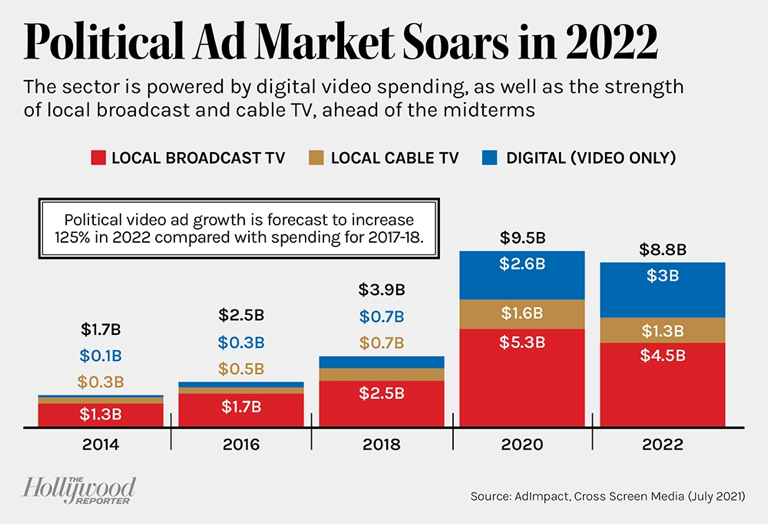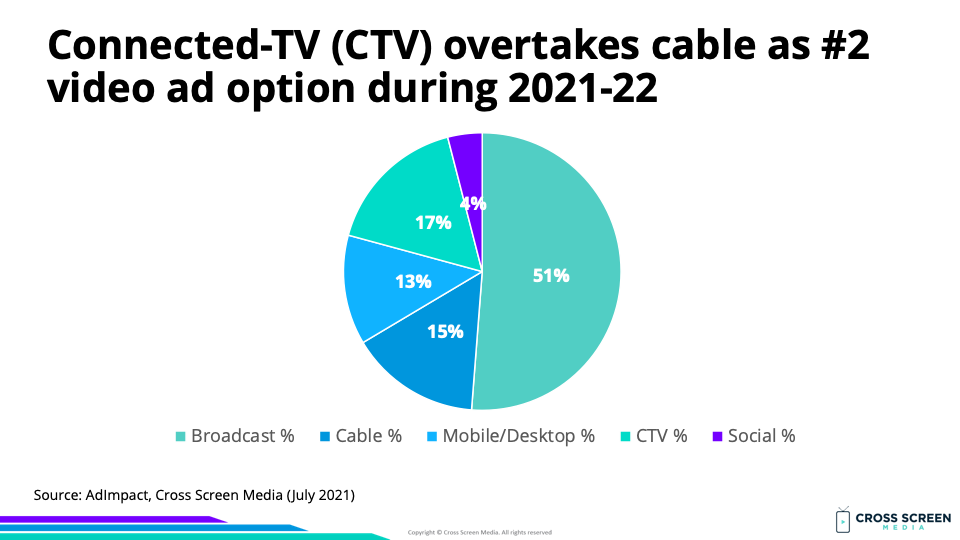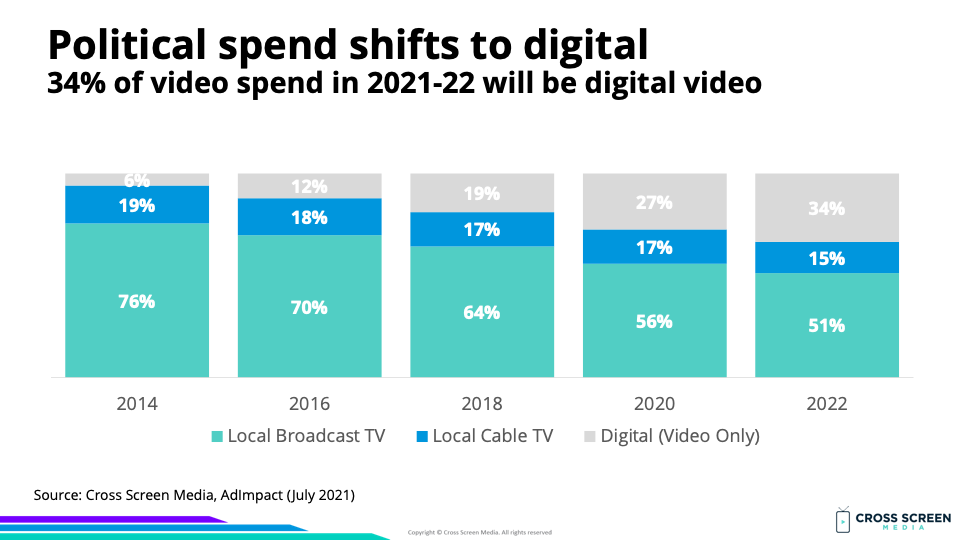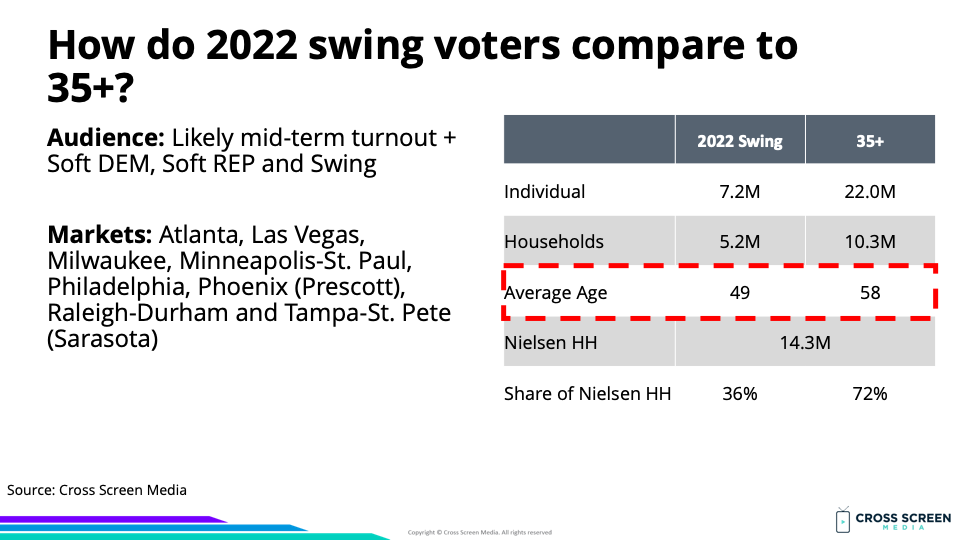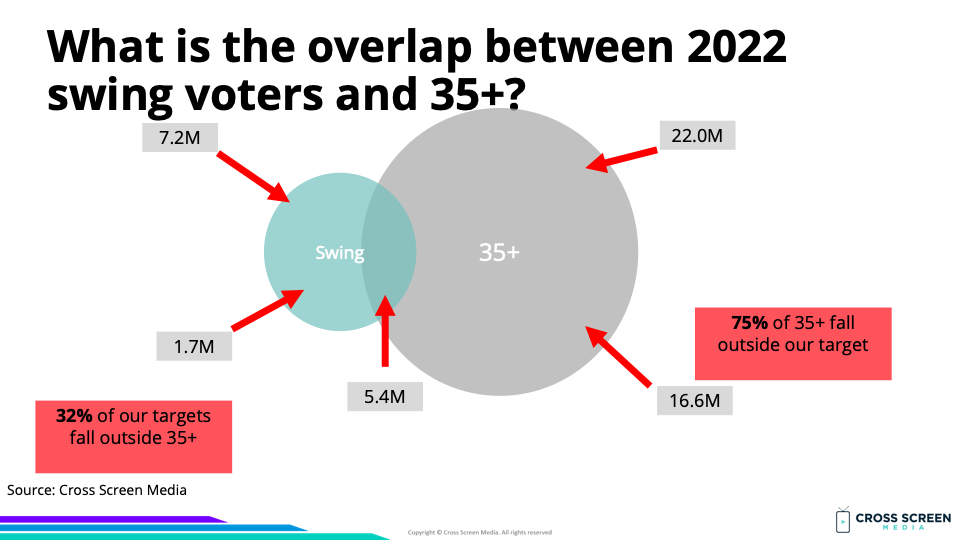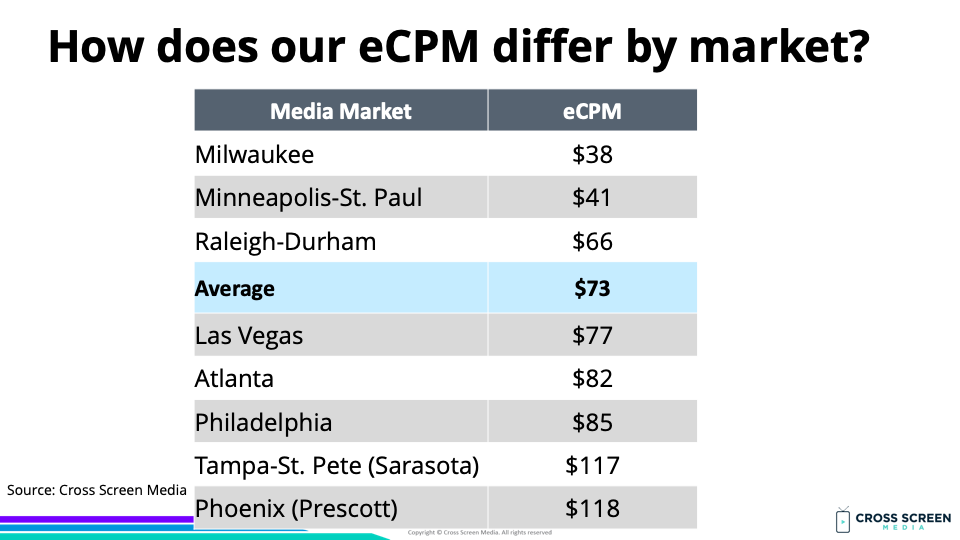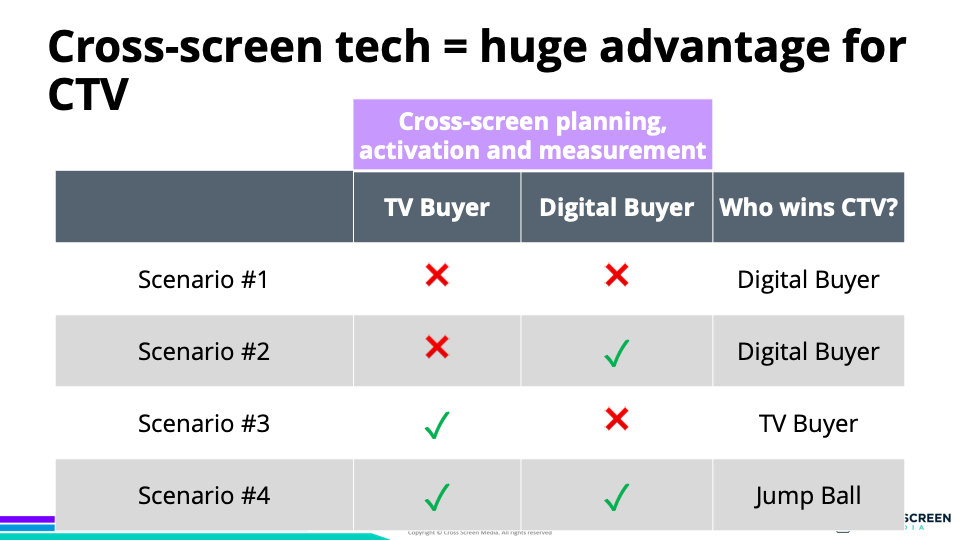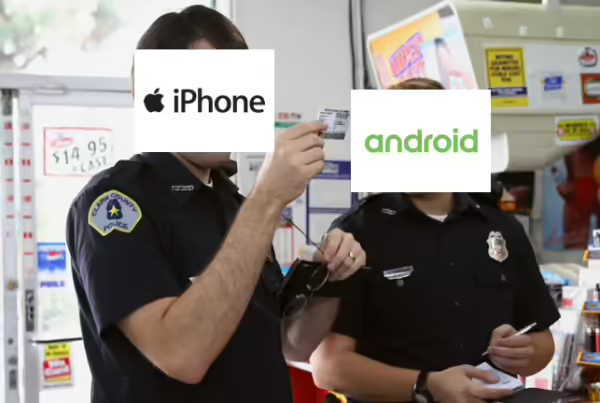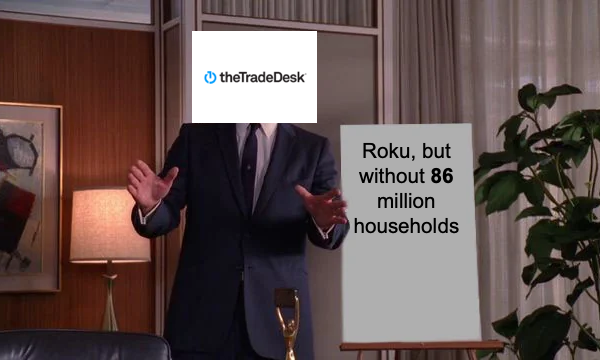I recently spoke at the American Association of Political Consultants annual conference in Puerto Rico (h/t Keith Norman @ Premion). The topic of my talk was the political video advertising market heading into the midterm elections of 2022.
Below is a summary of a few key points. The PDF presentation is available for a deeper dive.
Big question #1: How large is the political video ad market expected to be in 2022?
Quick answer: $8.8B
Big question #2: How does 2022 compare to past election cycles?
Key details for political video ad spending according to AdImpact/Cross Screen Media:
1) 2022 vs. 2018 – ↑ $4.8B (↑ 125%)
2) 2022 vs. 2020 – ↓ $697M (↓ 7%)
3) ≈ 5% of the entire U.S. video ad market
4) ≈ 20% of all video ad growth is from politics
Flashback #1: Breaking Down the $9B Political Video Ad Market
Flashback #2: 55 Billion Reasons to Care About Local Video Ads
Midterm cycle political video ad spending (% growth)
1) 2014 – $1.7B
2) 2018 – $3.9B (↑ 142%)
3) 2022P – $8.8B (↑ 125%)
Presidential cycle political video ad spending (% growth):
1) 2016 – $2.5B
2) 2020 – $9.5B (↑ 283%)
Worth your time: Midterm Moolah: TV Stations Cash in on Primary Season
Big question #3: What is the breakdown between screen types across linear and digital video?
Share of political video ad spend by screen type:
1) Local broadcast TV – 51%
2) Connected TV (CTV) – 17%
3) Local cable TV – 15%
4) Mobile/desktop – 13%
5) Social video – 4%
Digital share (including CTV) of political video ad spend:
1) 2014 – 6%
2) 2016 – 12%
3) 2018 – 19%
4) 2020 – 27%
5) 2022P – 34%
Big question #4: Why is reaching swing voters with video so hard?
Challenge #1: The actual audience (swing voters) consumes video content differently than our primary demo (35+).
Average age of audience:
1) 2022 swing voter – 49
2) Average adult – 51
3) 35+ demo – 58
Why this matters: Most TV advertising in politics is still planned/measured against a 35+ demo.
Challenge #2: Using a traditional demo for planning/measurement leads us to miss 32% of our target audience, while 75% of the demo is not our target.
Challenge #3: Local video ad pricing and media consumption are different by market, leading to variance in eCPMs for the same audience.
Big question #5: What is the solution?
Quick answer: Planning, activation, and measurement against audiences at the local level. Each market should have a unique/allocation and plan.
Big question #6: Who will win the battle for CTV dollars?
Quick answer: In the fight for CTV ad dollars, the group which adopts cross-screen planning, activation, and measurement will have an advantage.

.png?width=1120&upscale=true&name=9%20Billion%20Reasons%20to%20Care%20About%20Political%20Video%20Ads%20(1).png)
